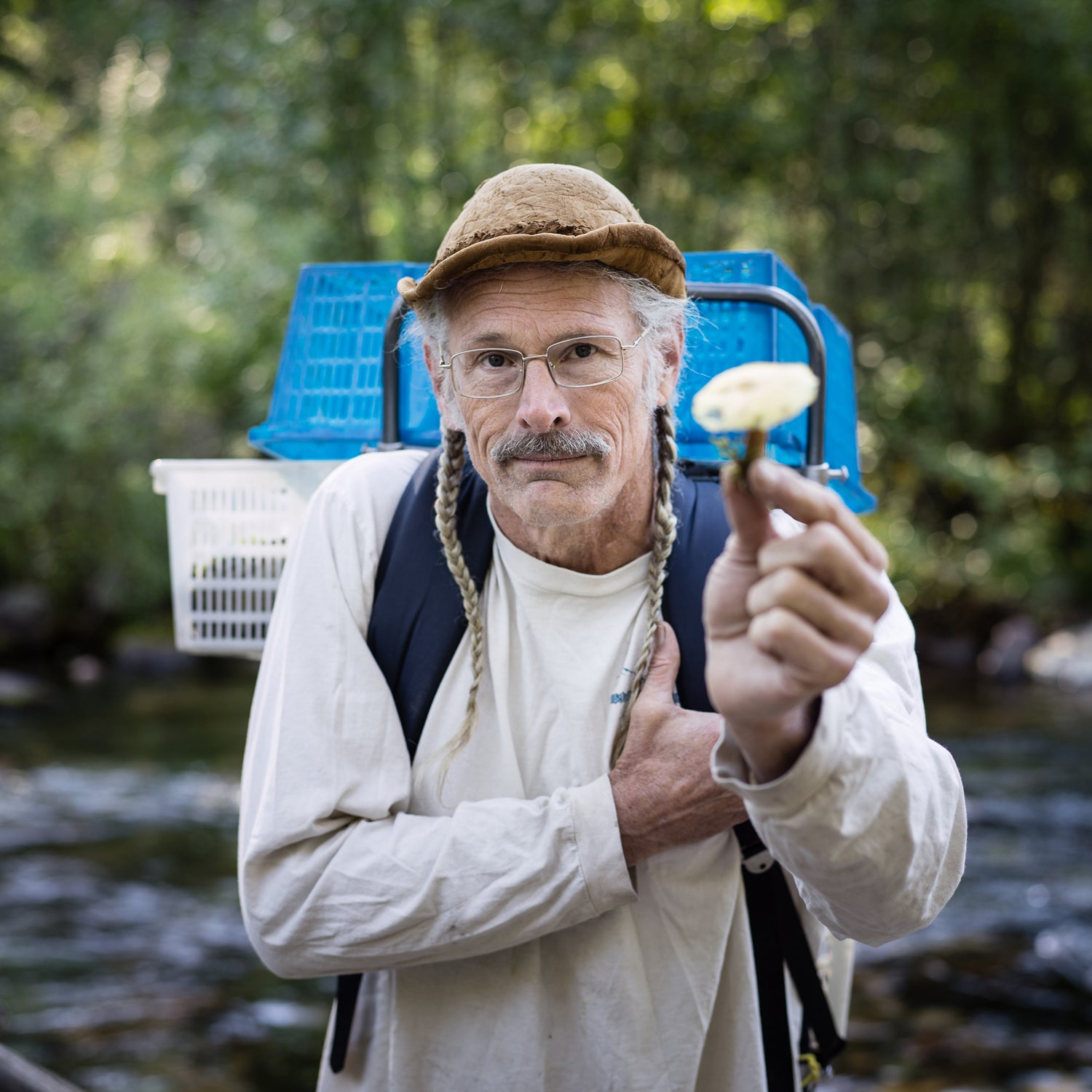In the wild mushroom world,┬á┬áis a legend. He has foraged┬áall over the world since the 1970s, taught classes on how to find┬ámushrooms for more than 30 years, and organized┬áseminars for dozens of organizations. After Ian Frazier profiled him for┬á║┌┴¤│ď╣¤═°┬áin 2004, Evans became a local┬ácelebrity in his hometown┬áof┬áMissoula, Montana.┬áAs an amateur forager┬ámyself, I┬áwanted to know about his┬ákit, so I called Evans and asked for his top gear recommendations.
- ░ş▓ďż▒┤┌▒:╠řEvans uses a custom knife he manufactures and sells. It has a curved blade with teeth on the back, a brush on the bottom, and a ruler on the handle. ÔÇťThe blade curves so you can use the knife at a slight angle to cut a mushroom. ItÔÇÖs good for poking in between stumps and things,ÔÇŁ Evans says. The teeth and brush remove as much dirt┬áfrom the mushroom as possible without cutting pieces off. The ruler helps with identification. ÔÇťItÔÇÖs nice to take a picture with [a ruler] because someone can look at the picture and have something for scale. Not everyoneÔÇÖs hand is the same size,ÔÇŁ Evans says.
- Backpack:┬áEvans hacked his pack┬áso he can carry lots of mushrooms without squishing any. He starts with an old external frame bag, then removes the body to reveal just the frame and harness. Next he attaches a board to the base of the frame,┬áthen stacks commercial fruit bins (usually about four) on top. Each bin is tied to the frame for support and┬áso it doesnÔÇÖt come loose. Fully loaded, Evans┬ácan carry about 80 pounds of fungi.
- Shirt:┬áWhen Evans doesnÔÇÖt want to carry a pack, he just uses his shirt to carry the mushrooms. As a clever hack, he sews buttons on the collar, then creates corresponding holes at┬áthe bottom┬áso he can attach the bottom of the shirt to the collar, creating┬áa tub that allows him to┬áwork hands-free. ÔÇťIt looks really ridiculous,ÔÇŁ Evans says.
- Footwear:┬áÔÇťIÔÇÖm not a good role model here,ÔÇŁ Evans says. ÔÇťI used to wear Red Wings and waffle stompers, but as I got older, I guess I got tougher.ÔÇŁ Nowadays he just wears sandals, but IÔÇÖd recommend something like the ┬ábecause youÔÇÖll likely be in the backcountry and need a solid boot for protection and┬áscrambling.┬á
- Water:┬áFinding mushrooms┬ácan take a long time and a lot of walking.┬áÔÇťMost mushroom hunt┬áfailures are caused by dehydration, at least here in Montana,ÔÇŁ Evans┬ásays. He knows the area where he forages, so he brings a couple standard water bottles and refills them straight from local streams. IÔÇÖm more cautious, so if IÔÇÖm going to be out for a long time and need to refill in a stream, I bring a simple, reliable physical filtration device like the .
- GPS Device:┬áItÔÇÖs easy to get lost foraging because youÔÇÖre looking at the ground and not paying attention to where youÔÇÖre wandering. ÔÇťEveryone is going to get lost. ItÔÇÖs just learning how to get found,ÔÇŁ Evans says. He doesn't carry one, but suggests all new foragers use a GPS device just in case. I like the┬á┬ábecause itÔÇÖs easy to use and offers weather radar overlays so you can avoid getting┬ácaught in a storm.


